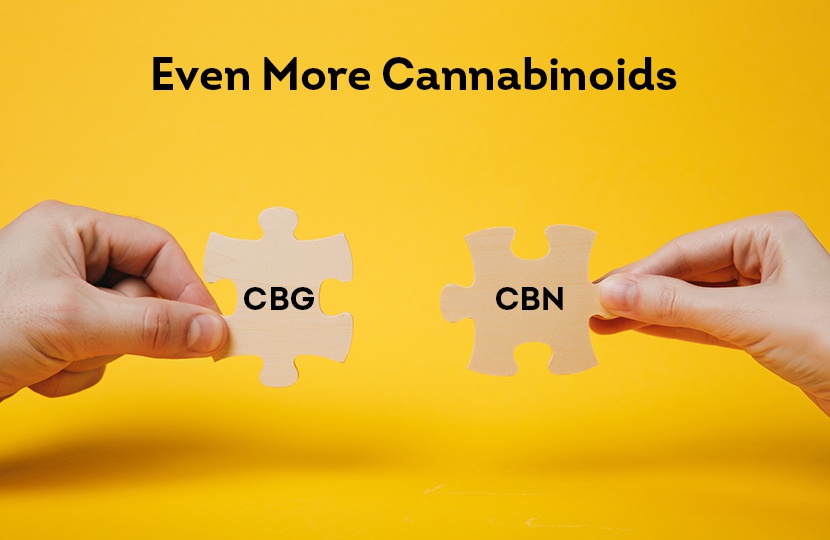At this point in your cannabis journey, you probably know the difference between CBD and THC quite well. They are two of the most common and most popular cannabinoids. Of course, there are many other beneficial compounds in cannabis plants that are worth learning about as well, and two that have been gaining popularity within the community are CBG and CBN.
What’s that? You haven’t heard of those before? Well, that’s why we’re here!
Though they don’t get as much attention as their famous cohorts, CBG and CBN are very important cannabinoids in cannabis plants. Like CBD, CBG and CBN are free of the psychotropic buzz that is commonly associated with THC. Now, let’s take a gander at what these compounds can do.
CBG
CBG is the abbreviated term for Cannabigerol, which is found in small quantities within a cannabis plant and comes with some potential healing qualities that are not present in CBD. This cannabinoid may be helpful for people suffering from digestive issues, and it could also be useful as an antibacterial agent. Not only that, but it is a great compound for treating headaches, glaucoma, or any other eye-related discomfort.
Even though cannabis plants don’t usually contain much CBG, a little goes a long way. Products containing trace amounts of this cannabinoid won’t always mention it on the label, though it compliments CBD quite nicely.
What’s especially interesting about CBG is that its carboxylated predecessor, CBGA, is actually responsible for creating the compounds that lead to THC, CBD, and other cannabinoids. Because of this, CBGA is very useful to cultivators who want to create more of the cannabinoids that are scarce in cannabis plants.
Researchers have only scratched the surface when it comes to this compound’s potential. In due time, we’ll know even more about what CBG can do and how it can benefit consumers.
CBN
Despite its non-intoxicating nature, cannabinol, commonly known as CBN, is surprisingly similar to THC. Cannabis enthusiasts have turned to CBN to help with sleep problems, though the jury is still out on whether or not it leads to a peaceful slumber. Regardless, some believe it has even stronger sedative properties than CBD. People don’t just turn to CBN for their sleep woes, however.
This cannabinoid is seen as an alternative to THC for benefits such as appetite stimulation, pain relief, and nausea suppression. More research is needed to fully understand the true benefits of CBN, though it’s certainly gaining traction within the community.
Unfortunately, you won’t find CBN-heavy strains on the market, so this compound is often produced by aging cannabis plants, which converts THCA to CBN.
Bottom Line
CBG and CBN are just two examples of the wide range of beneficial compounds existing inside cannabis plants. We are still discovering the potential within each and every cannabinoid, and as more is uncovered, products will be even more targeted to suit your medical needs. It’s an exciting time to belong to the cannabis community!
For more information, visit Bloc Dispensary

